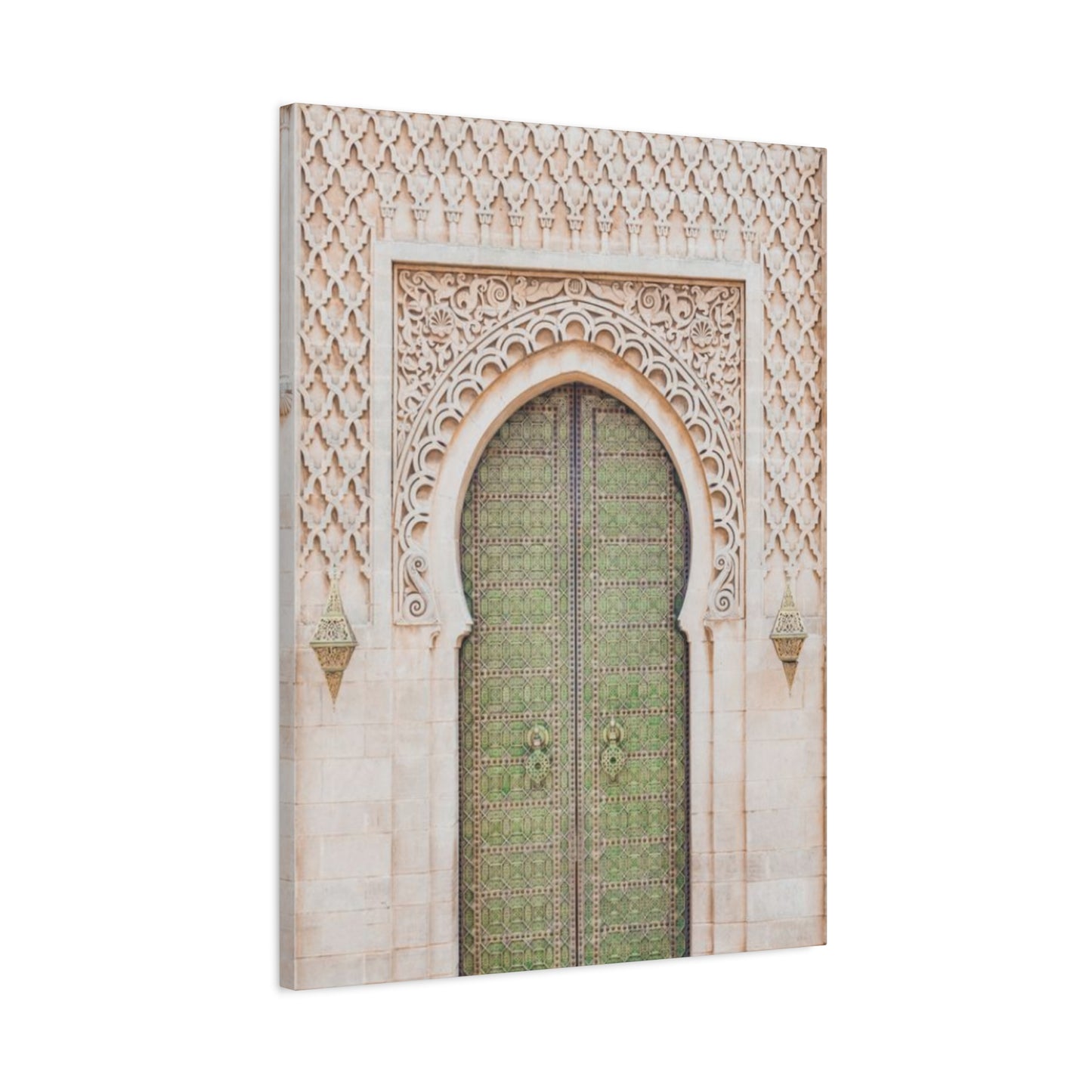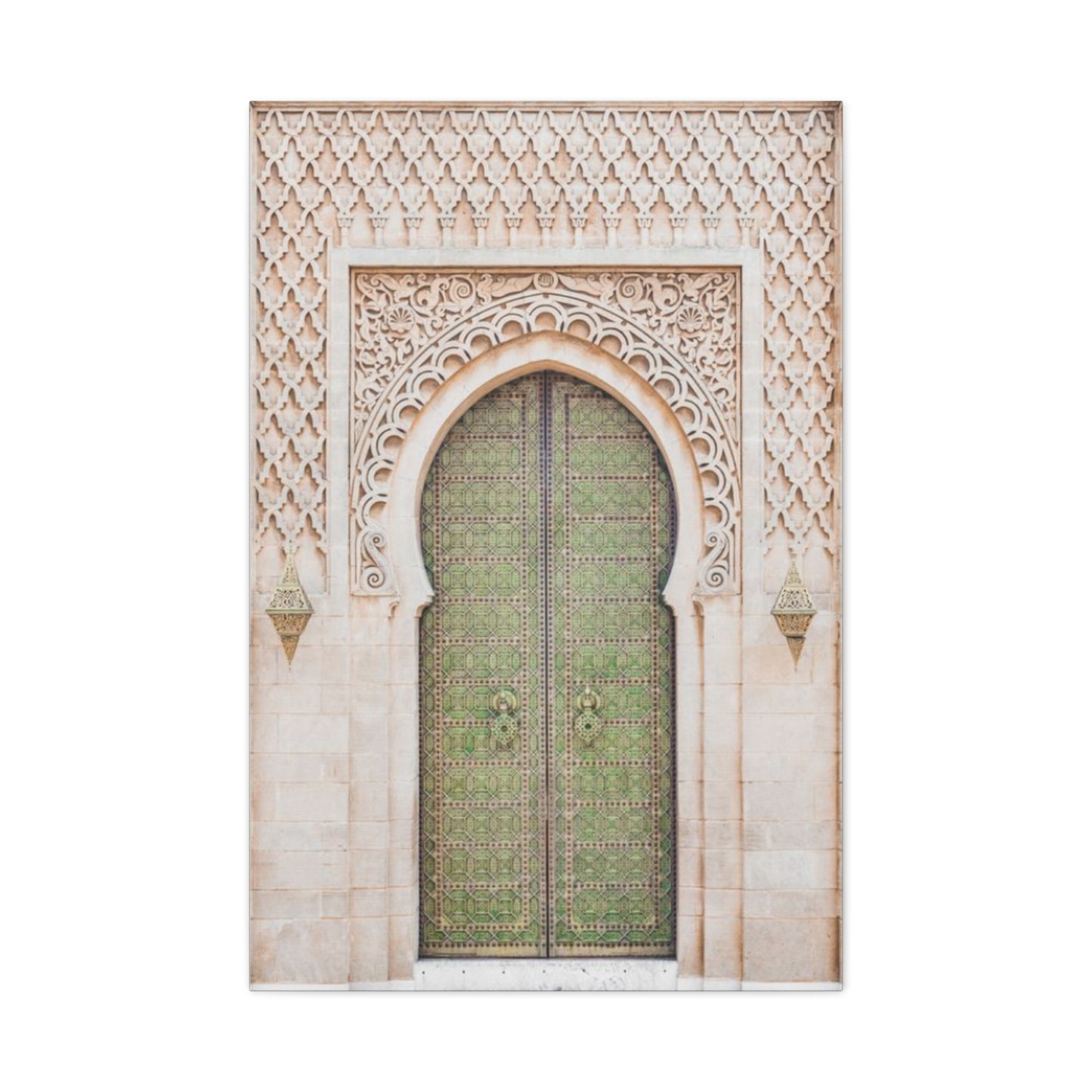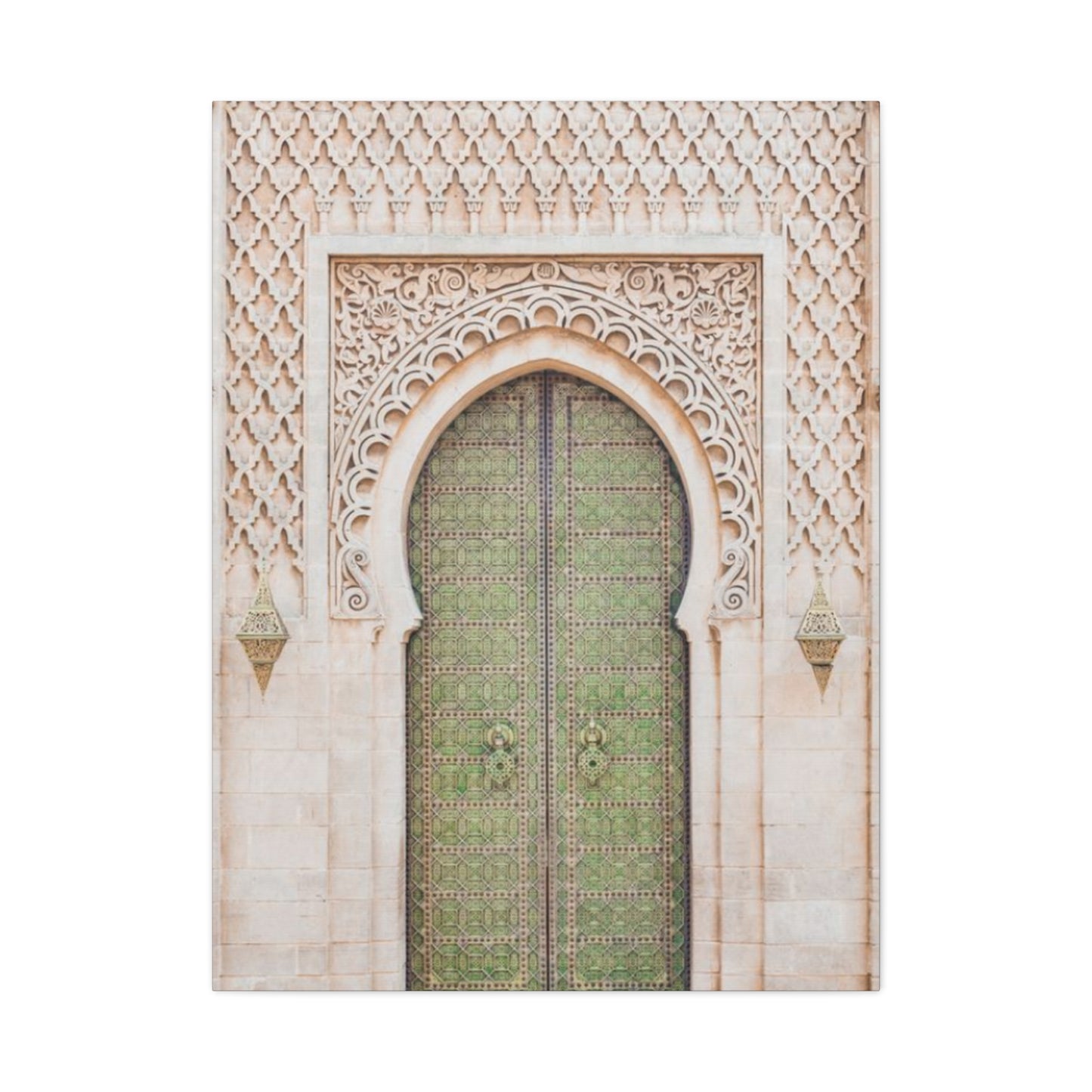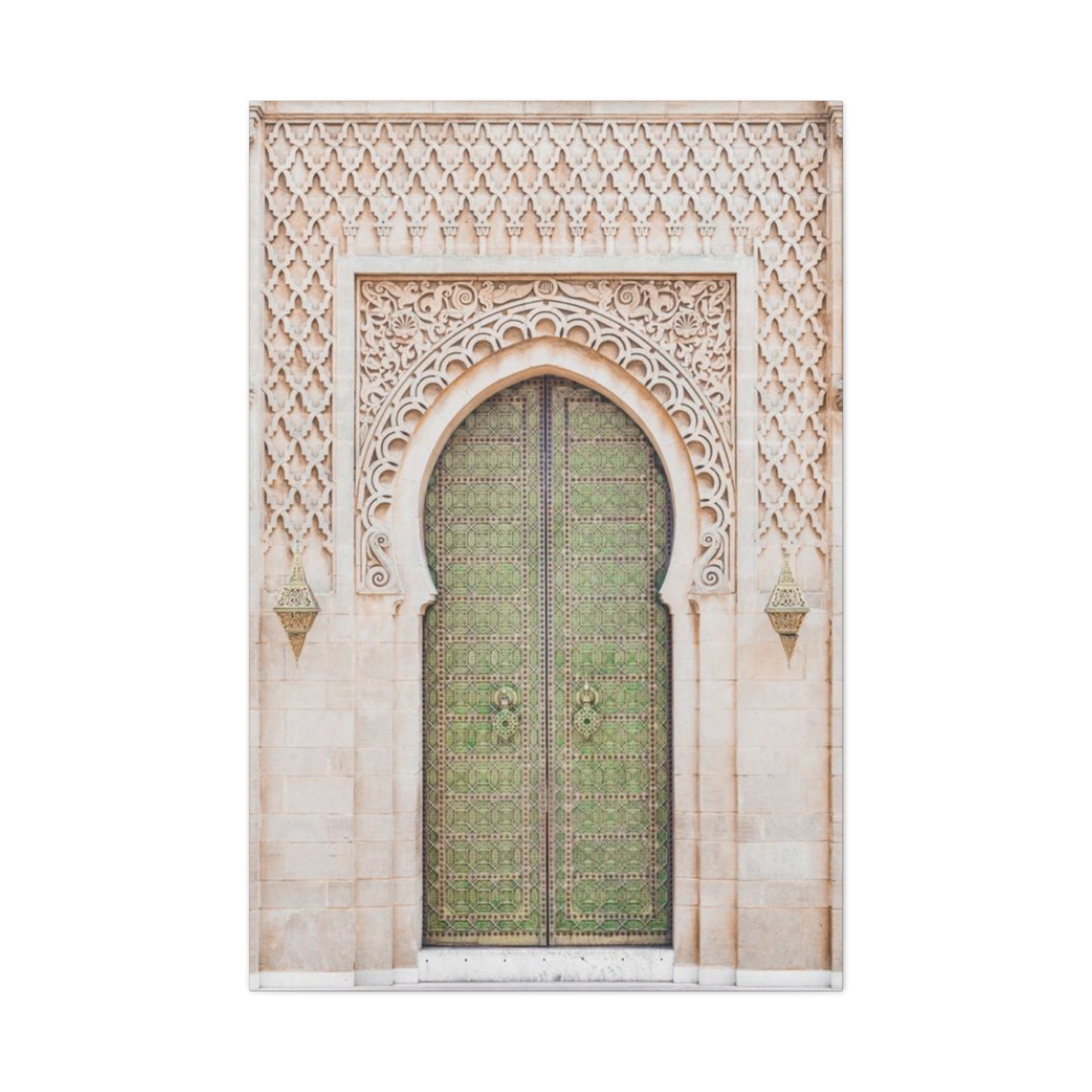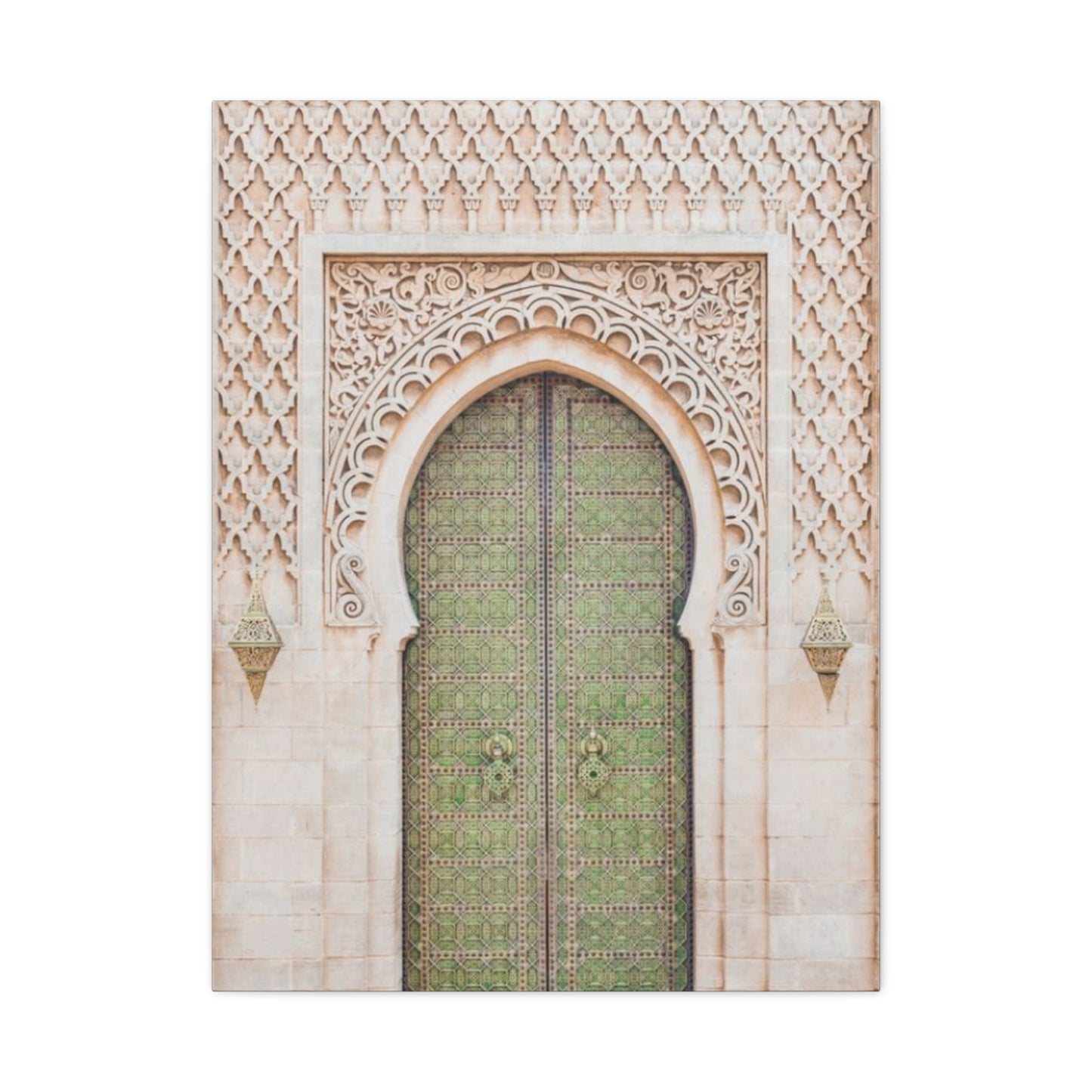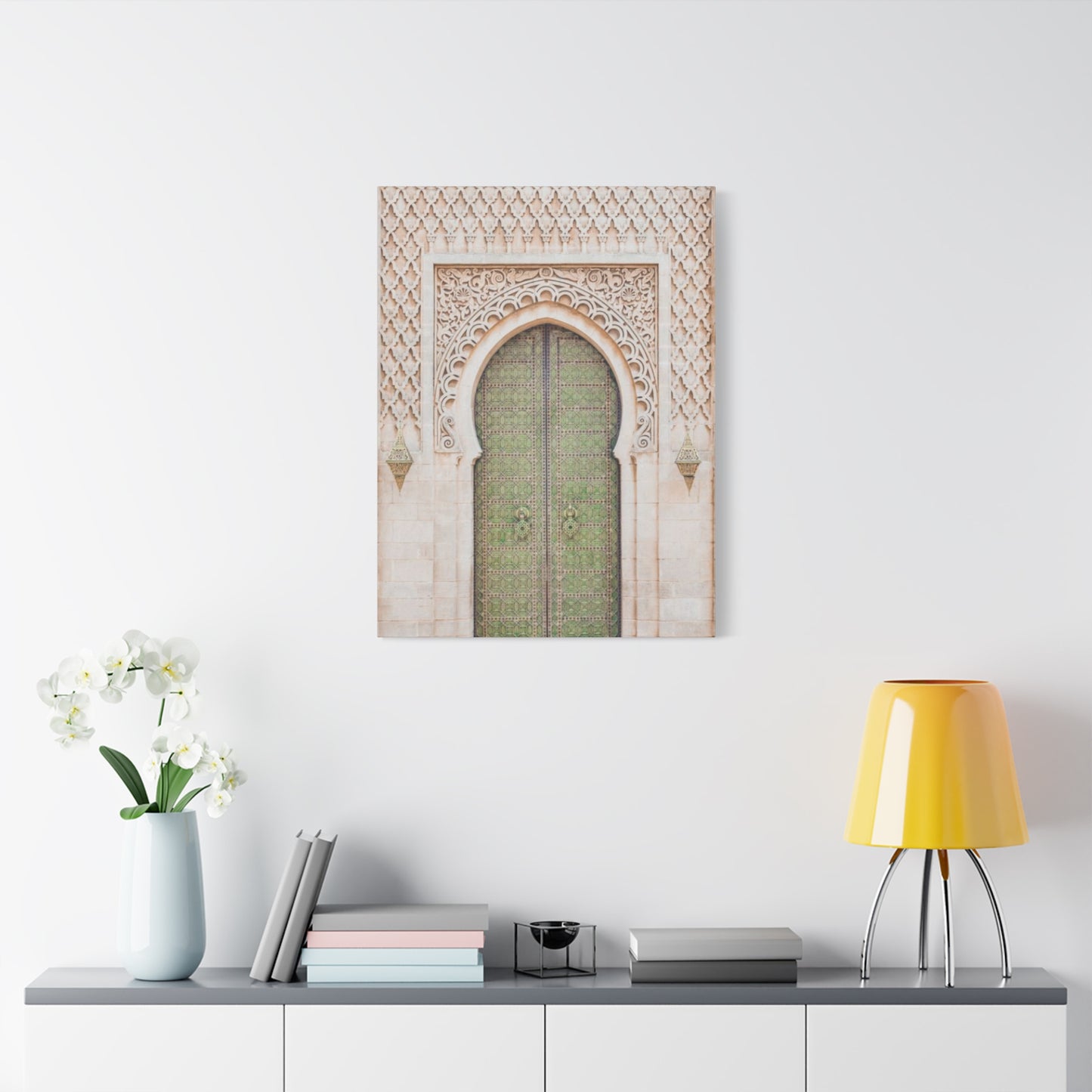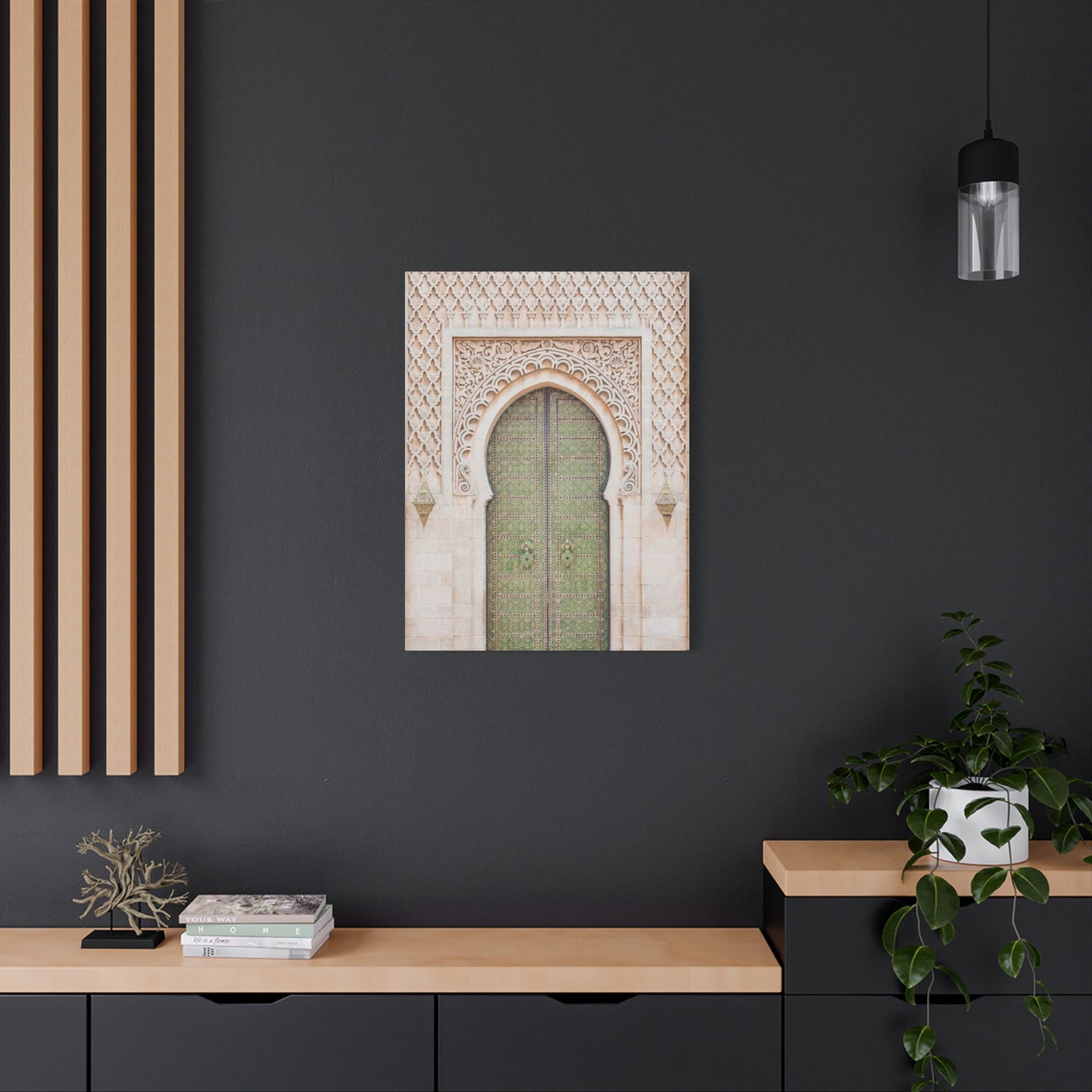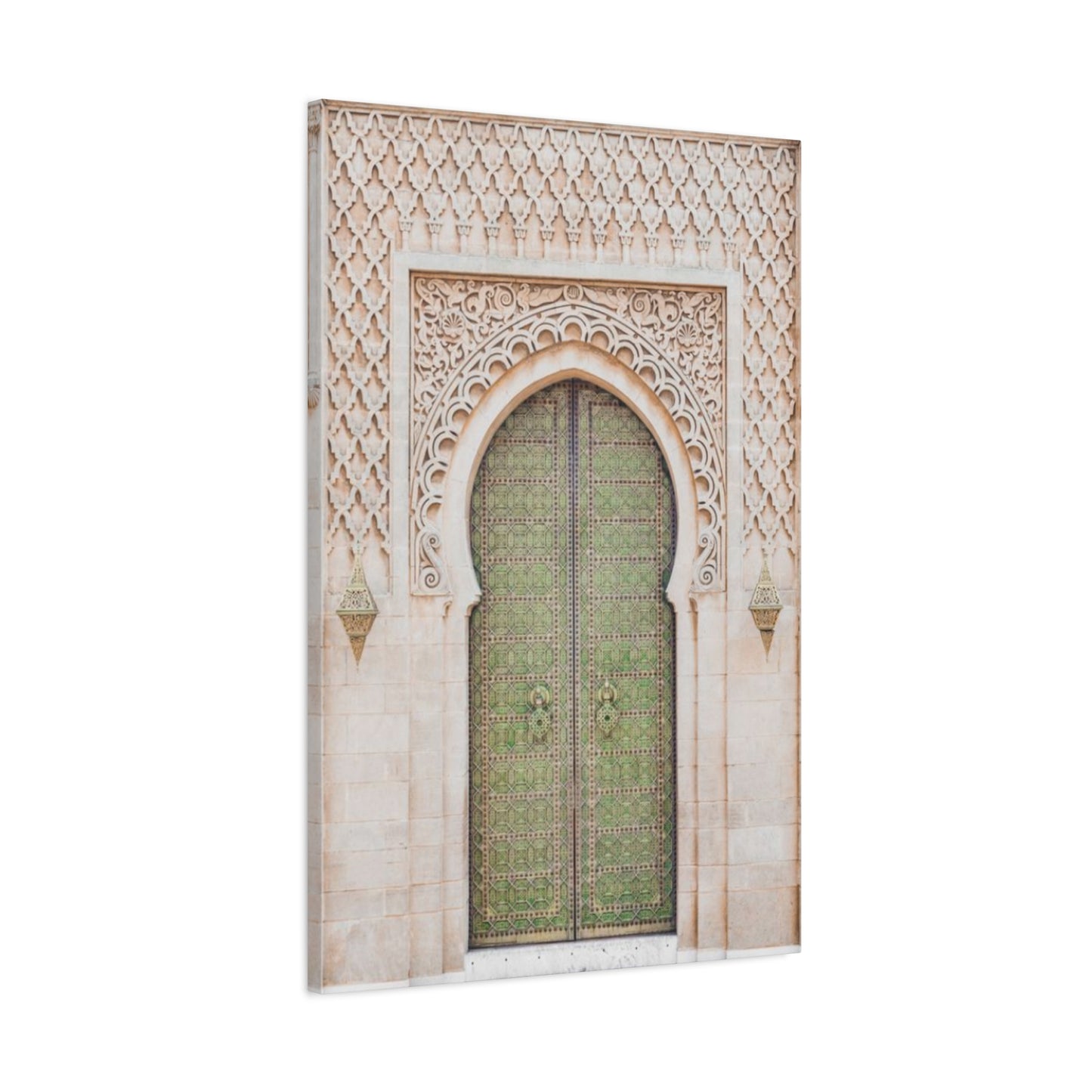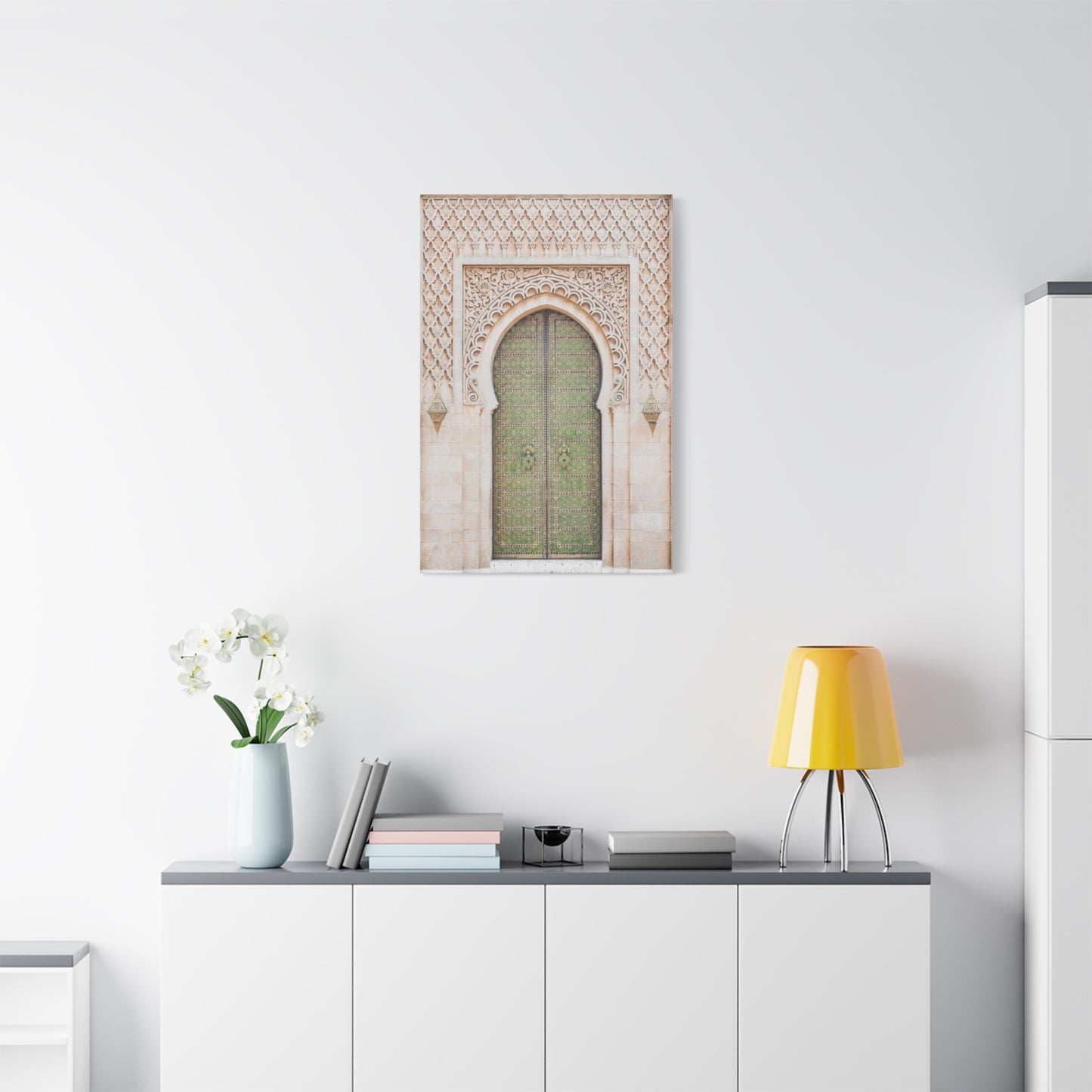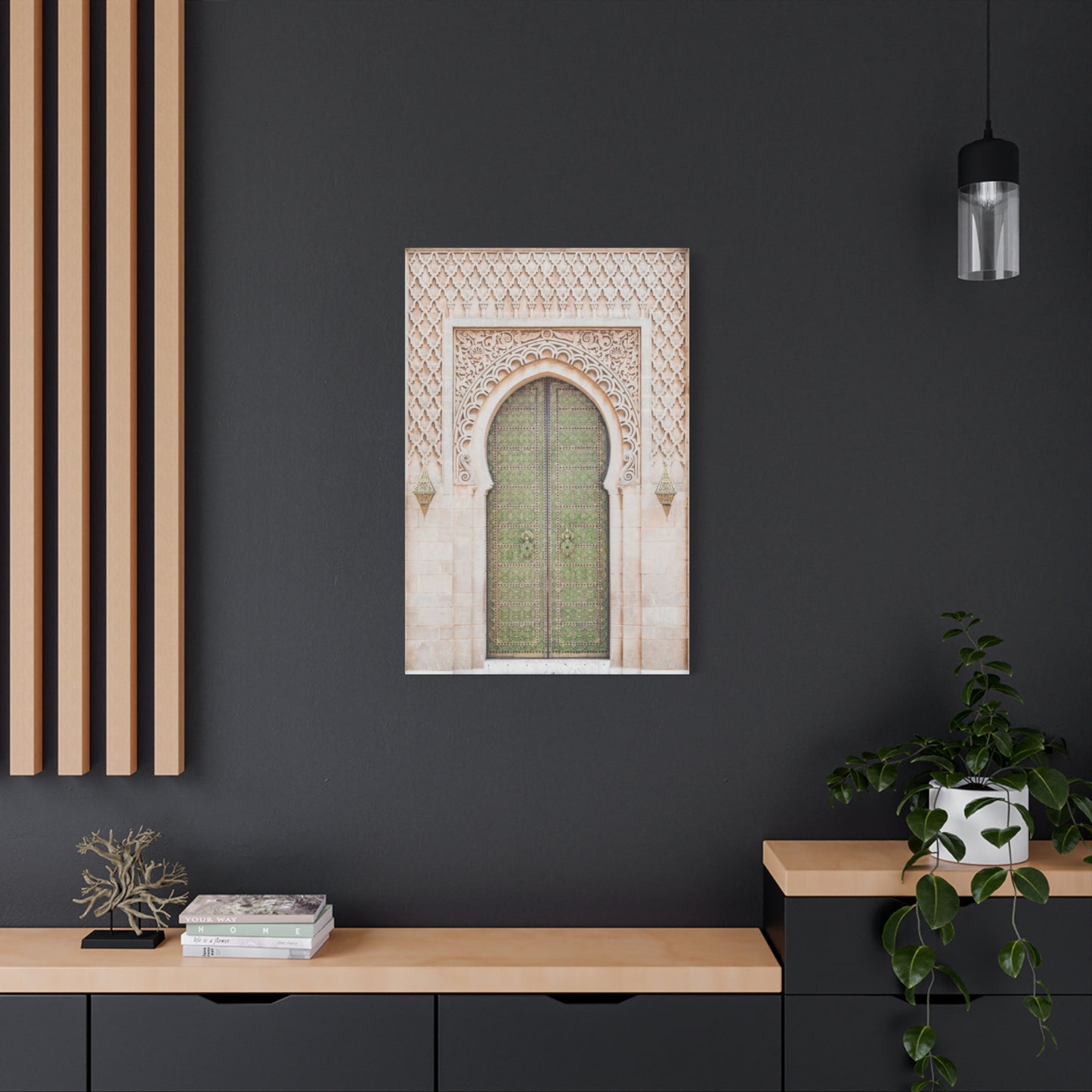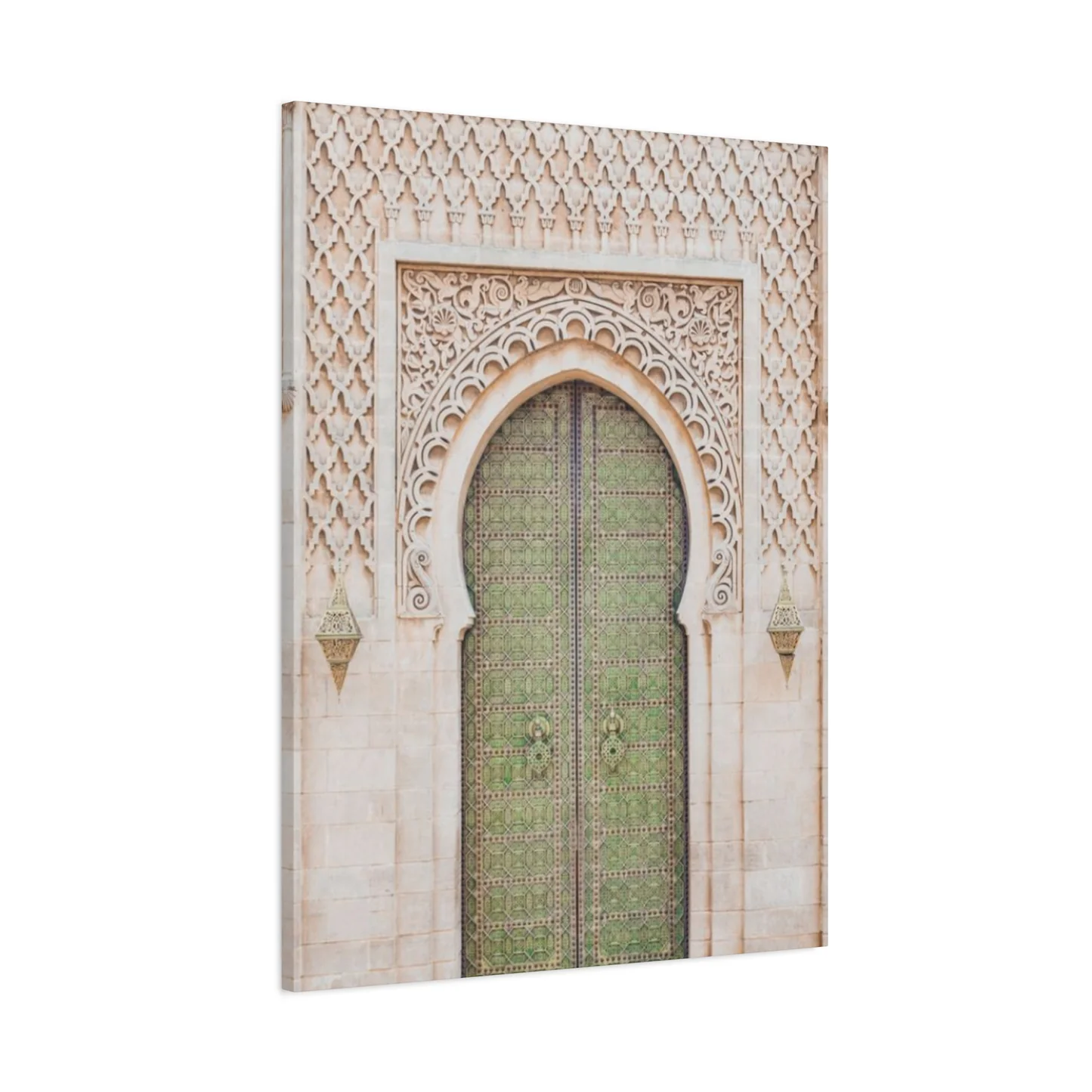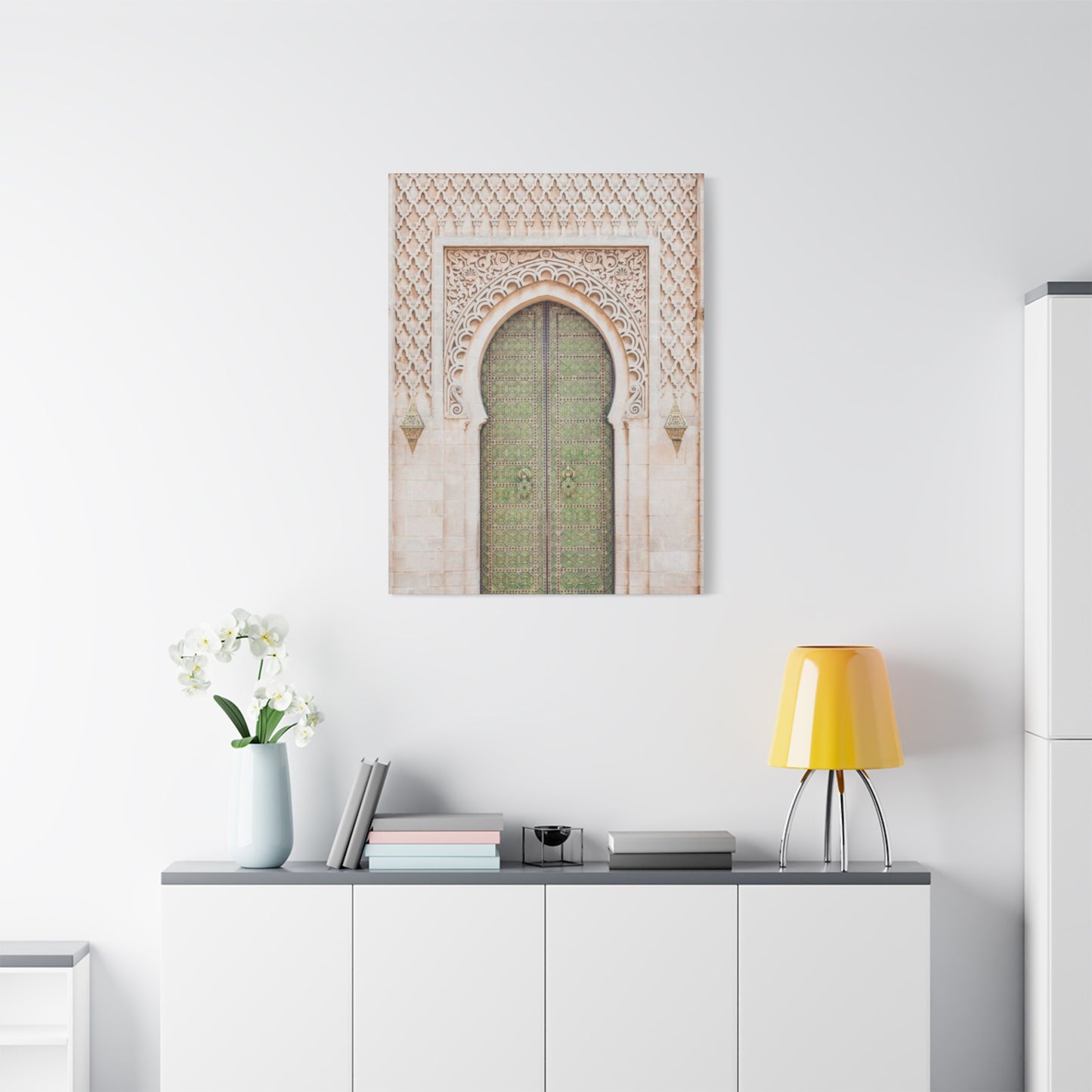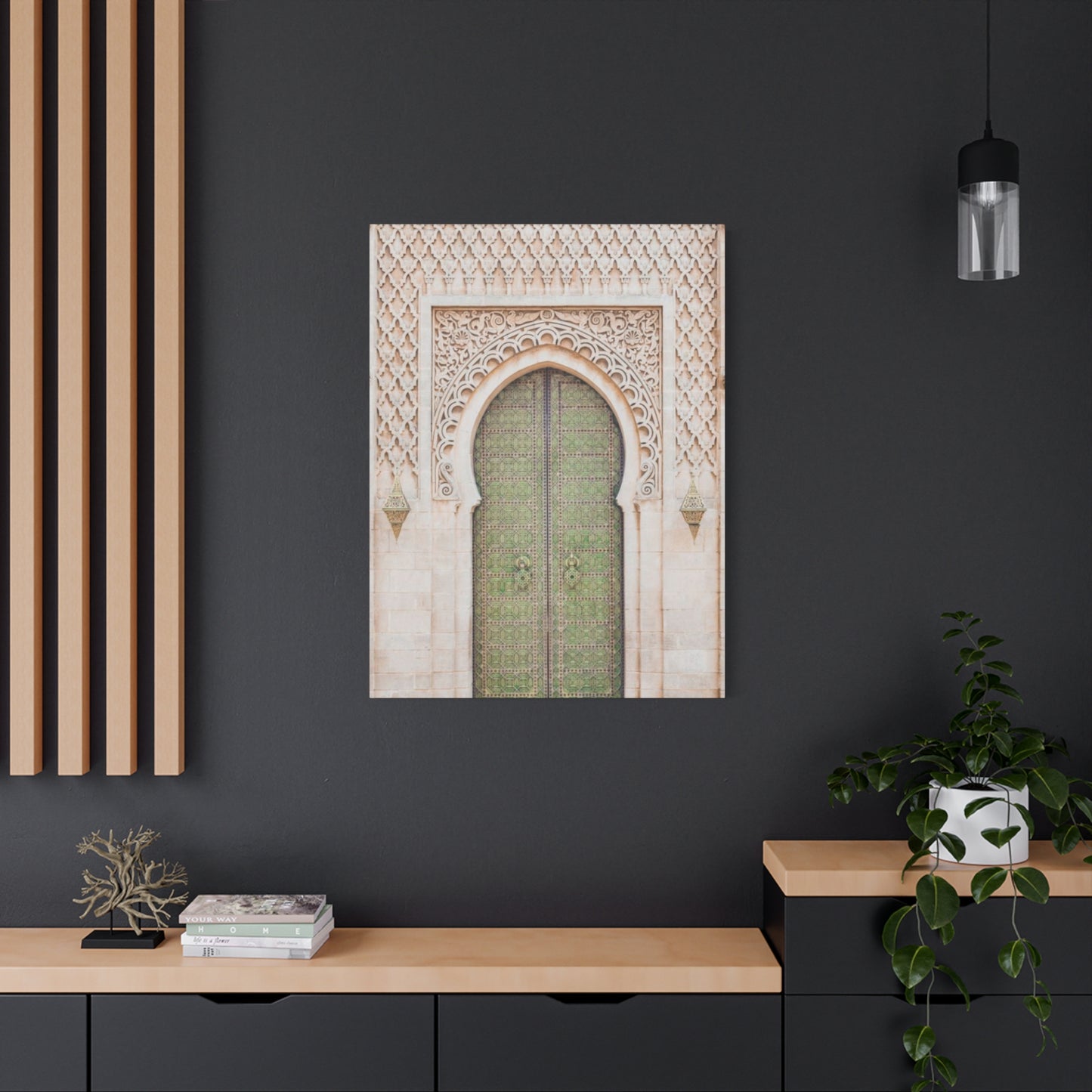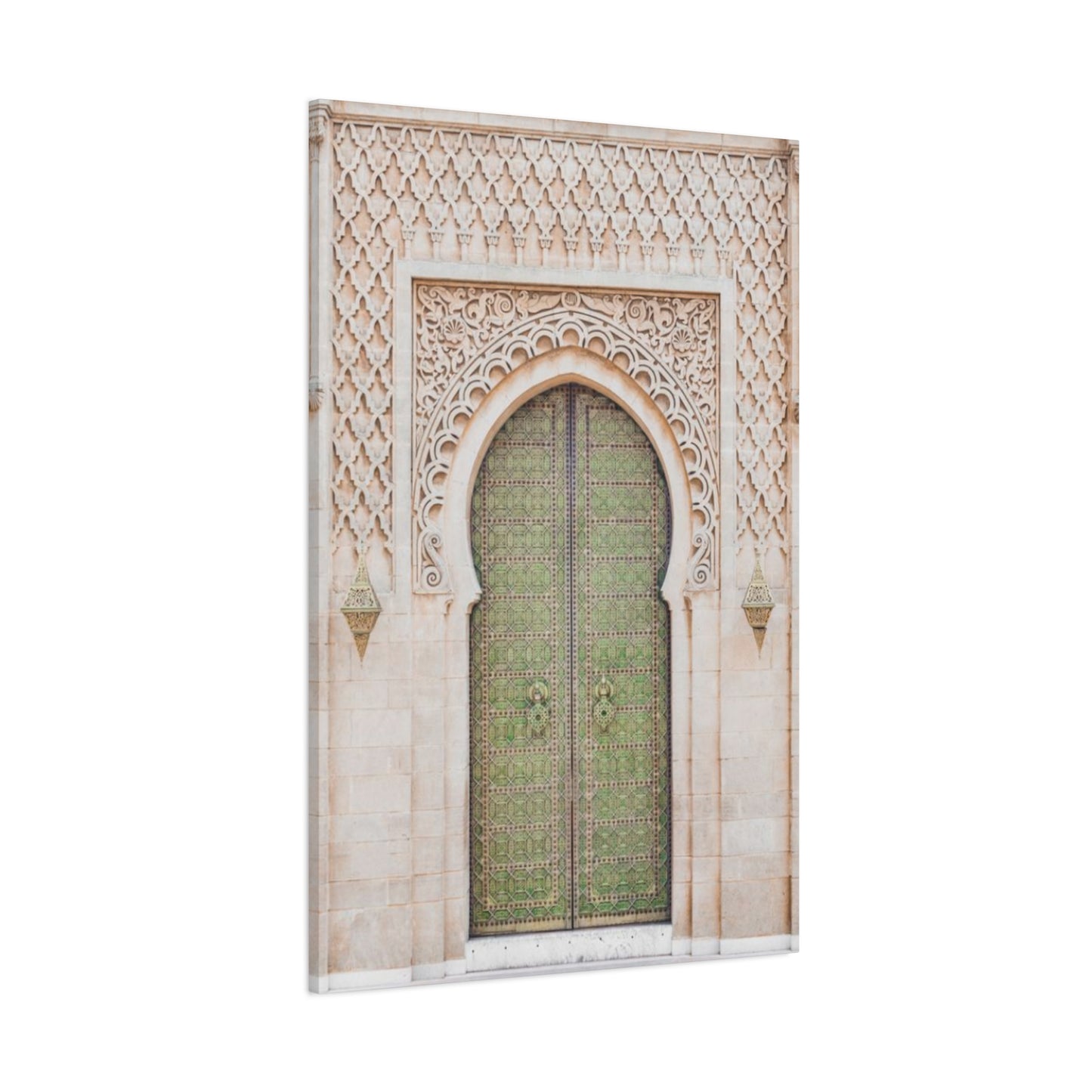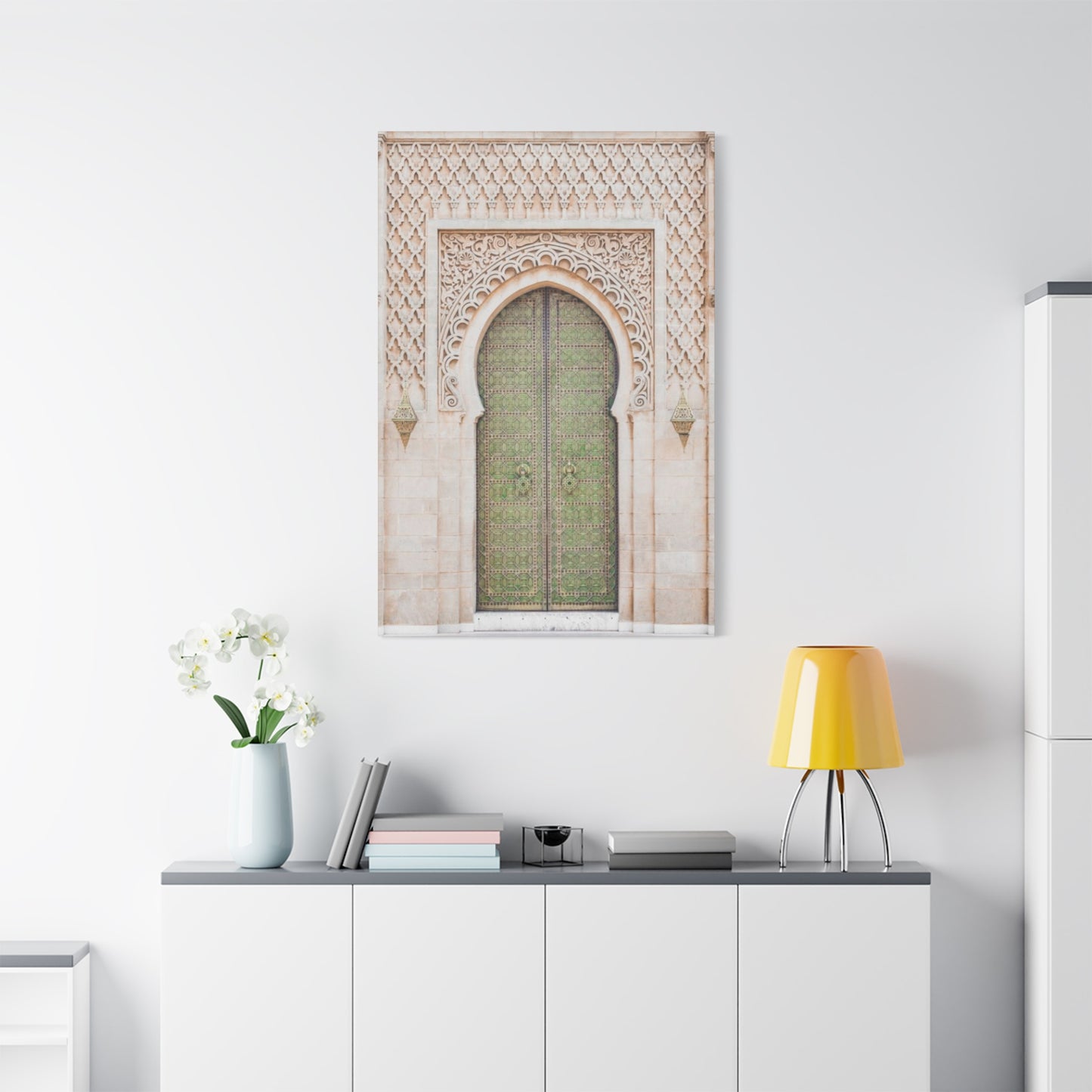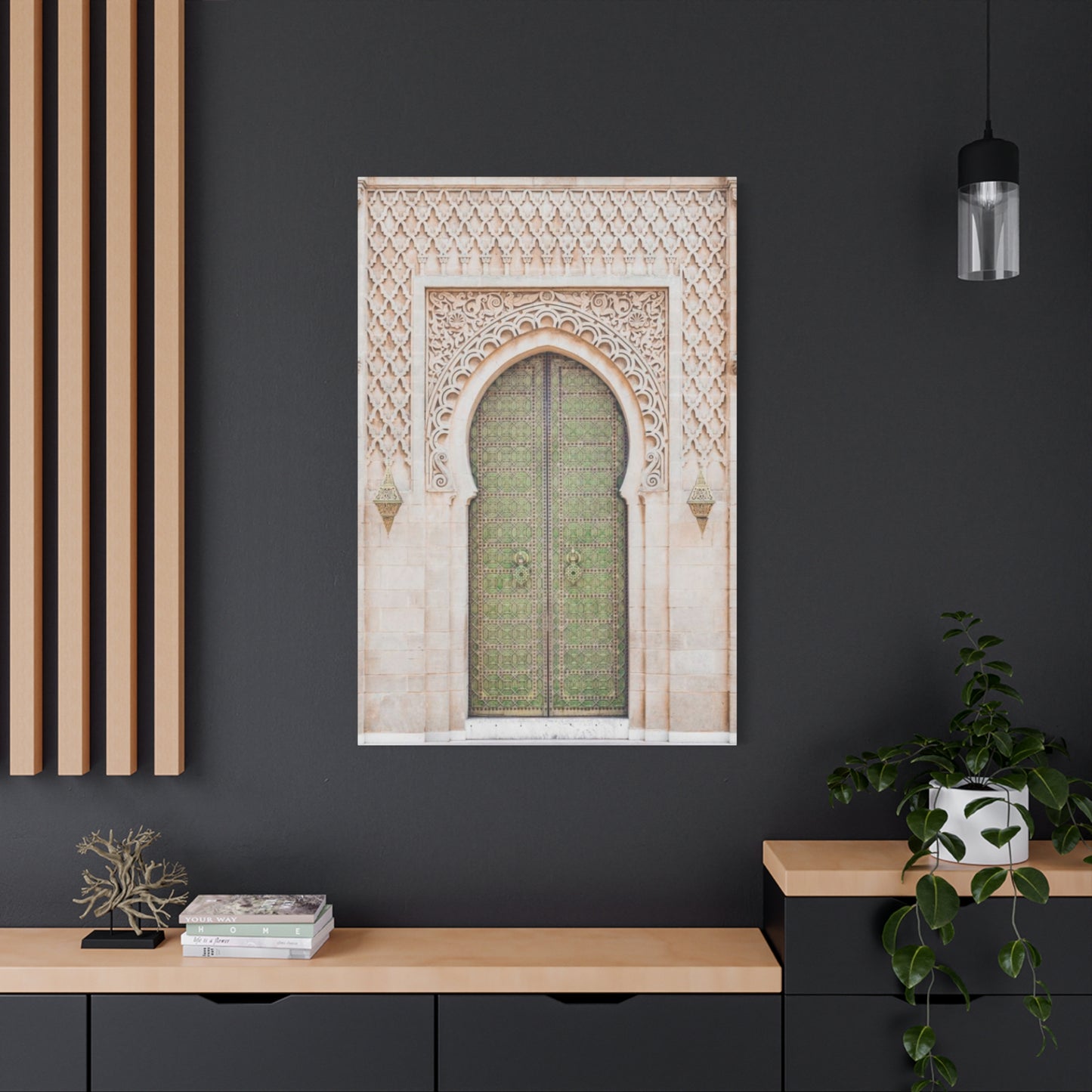Open Your Space to Global Charm with Moroccan Door Wall art Décor
The timeless allure of Moroccan architectural elements has captivated art enthusiasts and home decorators for centuries. Among the most striking features of Moroccan design are the ornate doors that serve as gateways to palaces, riads, and traditional homes throughout North Africa. These magnificent portals, with their intricate carvings, vibrant hues, and symbolic patterns, have transcended their functional purpose to become celebrated subjects in contemporary wall art. Moroccan door wall art represents more than mere decoration; it embodies a rich cultural heritage that speaks to craftsmanship, spirituality, and artistic excellence that has been refined over generations.
The fascination with Moroccan door art stems from its ability to transform any environment into a sanctuary of exotic beauty and cultural depth. These artistic interpretations capture the essence of ancient doorways that have welcomed travelers, protected families, and served as canvases for master craftsmen to display their skills. From the bustling medinas of Marrakech to the coastal cities of Casablanca, Moroccan doors tell stories of tradition, protection, and hospitality that resonate across cultures and continents.
Contemporary artists and photographers have embraced these architectural marvels, creating stunning wall art pieces that bring the mystique of Morocco into modern homes and commercial environments. The appeal lies not only in their aesthetic beauty but also in their ability to serve as conversation starters, meditation focal points, and windows into a culture renowned for its artistic sophistication.
Whether displayed as large statement pieces or incorporated into gallery walls, Moroccan door wall art offers versatility that complements various design schemes while maintaining its distinctive character. The rich symbolism embedded in these designs, from protective hamsa hands to intricate geometric patterns, adds layers of meaning that extend beyond surface beauty to connect viewers with ancient wisdom and cultural traditions.
Colors in Moroccan Door Art
The chromatic palette found in Moroccan door art reflects the diverse landscape and cultural influences that have shaped North African civilization. Traditional Moroccan doors showcase a spectrum of colors that range from deep, earthy tones to brilliant jewel-like hues, each carrying specific cultural significance and artistic purpose. The most prevalent colors include rich blues reminiscent of the Atlantic coastline, warm terracotta shades that echo the desert sands, vibrant greens symbolizing paradise and prosperity, and golden yellows that capture the intensity of Moroccan sunlight.
Blue holds particular significance in Moroccan culture, representing protection against the evil eye and serving as a symbol of spirituality and peace. The famous Chefchaouen blue, a distinctive powder blue that adorns entire neighborhoods in the mountain city, frequently appears in door art interpretations. This azure hue creates a sense of tranquility and coolness that contrasts beautifully with warmer accent colors, making it a popular choice for contemporary Moroccan door wall art pieces.
Red and terracotta tones dominate many traditional Moroccan door designs, reflecting the natural clay and iron oxide pigments abundant in the region. These warm colors evoke feelings of hospitality and warmth, qualities deeply embedded in Moroccan culture. Artists often employ various shades of red, from deep burgundy to bright scarlet, to create visual depth and emotional resonance in their door art interpretations.
Green, considered the color of Islam and nature, appears frequently in Moroccan door art as a symbol of life, renewal, and divine blessing. The use of green ranges from soft sage tones to vibrant emerald shades, often paired with complementary colors to create harmonious color schemes that reflect the natural world. This color choice particularly appeals to those seeking to bring elements of nature and spiritual calm into their living environments.
The incorporation of metallic accents, particularly gold and bronze, adds luxury and sophistication to Moroccan door art pieces. These metallic elements often highlight intricate details, hardware, and decorative elements, creating focal points that catch and reflect light throughout the day. The interplay between matte base colors and metallic highlights mimics the authentic appearance of aged Moroccan doors, where metal fittings have developed patina over centuries of use.
Contemporary artists working with Moroccan door themes often experiment with color combinations that honor traditional palettes while incorporating modern sensibilities. Some pieces feature monochromatic schemes that emphasize texture and form over color, while others embrace bold, saturated hues that make dramatic statements in contemporary settings. The versatility of color in Moroccan door art allows collectors to find pieces that complement existing decor while introducing exotic elements that enhance overall aesthetic appeal.
The weathering and aging processes that natural Moroccan doors undergo contribute to their color complexity, and artists often replicate these effects through various techniques. Layers of paint that have chipped and faded over time create unique patinas that add character and authenticity to art pieces. This weathered appearance tells stories of time, climate, and human interaction, elements that resonate with viewers seeking connections to history and cultural continuity.
Color psychology plays a significant role in the appeal of Moroccan door wall art. The warm, inviting hues commonly found in these pieces create environments that promote relaxation, creativity, and social interaction. Cool blues and greens provide balance and tranquility, while warm reds and yellows energize and inspire. This careful balance of warm and cool tones makes Moroccan door art suitable for various room types and functions.
Framing Moroccan Door Prints
The presentation of Moroccan door prints through appropriate framing techniques significantly impacts their visual effect and longevity. Selecting the right frame for these culturally rich artworks requires consideration of both aesthetic harmony and preservation needs. Traditional framing approaches often emphasize natural materials that complement the organic textures and earthy tones characteristic of Moroccan door imagery. Wood frames crafted from materials like cedar, olive wood, or distressed pine create connections to the natural elements present in authentic Moroccan architecture.
The width and profile of frame moldings affect how viewers perceive the artwork and its relationship to surrounding decor. Wider frames tend to create more formal presentations that work well in traditional or eclectic settings, while narrower profiles offer contemporary appeal that suits modern environments. The frame profile should complement rather than compete with the intricate details present in Moroccan door imagery, ensuring that the artwork remains the focal point while receiving appropriate support and enhancement.
Color coordination between frames and artwork requires careful consideration of both the dominant and accent colors present in the piece. Neutral frame colors like warm whites, soft grays, or natural wood tones typically provide safe choices that allow the artwork to speak for itself. However, bold frame colors can create dramatic effects when thoughtfully selected to complement rather than clash with the door imagery. Deep blues, rich burgundies, or golden tones can enhance specific color elements within the artwork while creating cohesive visual statements.
Matting options for Moroccan door prints offer opportunities to create visual breathing room and add sophistication to the presentation. Traditional white or off-white mats provide clean, classic appearances that work well in most settings. However, colored mats that echo tones from within the artwork can create more integrated, harmonious presentations. Textured mats with linen or fabric surfaces add tactile interest that complements the material qualities suggested in door imagery.
Multiple matting layers can create depth and luxury in framing presentations. A colored inner mat paired with a neutral outer mat creates subtle color accents while maintaining overall sophistication. The proportions of mat borders require careful calculation to ensure proper visual balance. Generally, slightly larger bottom margins create more pleasing proportions than perfectly equal borders on all sides.
UV-protective glazing represents a crucial consideration for preserving Moroccan door prints, particularly those featuring vibrant colors susceptible to fading. Museum-quality glazing materials filter harmful ultraviolet rays while maintaining color accuracy and clarity. Anti-reflective coatings reduce glare that might interfere with viewing, especially important for pieces displayed in rooms with multiple light sources or large windows.
Conservation framing techniques ensure long-term preservation of valuable prints. Acid-free materials prevent chemical reactions that could damage artwork over time. Proper spacing between glazing and artwork prevents condensation issues that might lead to mold or adhesion problems. These conservation considerations become particularly important for original photographs or limited-edition prints that represent significant investments.
Frame hardware and hanging systems require attention to both security and aesthetics. Heavy frames need robust hanging systems that distribute weight evenly across wall surfaces. French cleat systems provide excellent security for large pieces while allowing easy repositioning when needed. Wire hanging systems work well for lighter frames but require proper installation to prevent tilting or falling.
The scale relationship between frames and room proportions affects overall impact. Large Moroccan door prints make bold statements that work well as focal points in spacious rooms, while smaller prints can be grouped to create gallery walls or complement other decorative elements. Frame thickness should be proportional to artwork size, with larger pieces typically requiring more substantial frames to maintain visual balance.
Custom framing options allow for personalized presentations that reflect individual tastes and specific installation requirements. Professional framers can create unique solutions that incorporate special materials, unusual proportions, or complex mounting requirements. While custom framing represents a larger investment, it ensures optimal presentation and protection for valued artwork while creating unique aesthetic statements that reflect personal style preferences.
Cultural Flair with Door Art
Incorporating Moroccan door art into contemporary living environments creates opportunities to celebrate cultural diversity while adding sophisticated visual elements that reflect global appreciation for traditional craftsmanship. The cultural significance embedded in these artistic representations extends beyond surface beauty to encompass spiritual beliefs, social customs, and artistic traditions that have evolved over centuries. Understanding these cultural dimensions enhances appreciation for the artwork while informing thoughtful integration into modern decorating schemes.
The symbolic elements commonly found in Moroccan door designs carry meanings that resonate across cultural boundaries. Hamsa hands, representing protection and blessing, appear frequently in door hardware and decorative elements. These symbols connect viewers to universal desires for safety, prosperity, and spiritual well-being, making them particularly meaningful additions to homes and gathering places where protection and positive energy are valued.
Geometric patterns that characterize Moroccan door art reflect mathematical principles and spiritual concepts that influenced Islamic art development. These intricate designs, based on complex mathematical relationships, create meditative focal points that encourage contemplation and appreciation for the intersection of art, science, and spirituality. The repetitive nature of these patterns creates visual rhythms that can enhance room ambiance while providing subtle background interest that doesn't overwhelm other decorative elements.
The craftsmanship traditions represented in Moroccan door art connect contemporary viewers to generations of skilled artisans who perfected techniques for working with wood, metal, and other natural materials. This connection to traditional making processes appeals to those seeking alternatives to mass-produced decoration, offering instead connections to human creativity and cultural continuity that industrial manufacturing cannot replicate.
Color symbolism in Moroccan culture adds layers of meaning to door art pieces that extend beyond aesthetic considerations. Blue represents protection and spirituality, green symbolizes Islam and nature, red conveys hospitality and warmth, while white suggests purity and peace. Understanding these color associations allows for more thoughtful placement and combination of door art pieces with other decorative elements to create environments that reflect intended moods and cultural appreciation.
The hospitality traditions central to Moroccan culture make door art particularly appropriate for entry areas, living rooms, and dining areas where guests are welcomed and entertained. Placing Moroccan door art in these locations honors the cultural tradition of warm hospitality while creating conversation starting points that can lead to discussions about travel, culture, and artistic appreciation. This cultural context adds depth to decorating choices that goes beyond mere aesthetic considerations.
Regional variations in Moroccan door styles reflect the diverse cultural influences that have shaped different areas of the country. Doors from Marrakech might feature different color palettes and decorative elements than those from Fez or Casablanca, reflecting local traditions, available materials, and historical influences. This regional diversity offers collectors opportunities to explore specific cultural connections or create eclectic combinations that celebrate Morocco's cultural complexity.
The fusion of Moroccan door elements with contemporary design sensibilities creates unique aesthetic opportunities that honor traditional cultural expressions while meeting modern functional and aesthetic needs. This cultural fusion approach allows for creative interpretations that maintain respect for traditional sources while adapting to contemporary living requirements and personal style preferences.
Festival and celebration traditions associated with Moroccan culture provide seasonal opportunities to highlight door art pieces through complementary decorations, lighting, or arrangement changes. Understanding the cultural calendar and traditional celebration elements can inform temporary decorating schemes that create cultural immersion experiences while maintaining year-round appreciation for the permanent art pieces.
The storytelling aspect of Moroccan door art connects viewers to narrative traditions that have preserved cultural knowledge and values across generations. Each door design tells stories about the families, communities, and craftspeople who created and used these architectural elements, adding human interest and emotional depth to what might otherwise be viewed as purely decorative objects.
Popular Moroccan Door Styles
The diversity of Moroccan door styles reflects centuries of cultural evolution, regional influences, and artistic innovation that have produced distinctive design categories each with unique characteristics and appeal. Identifying and understanding these style variations helps collectors and decorators make informed choices about which door art pieces will best suit their aesthetic preferences and environmental requirements. The most recognizable styles have emerged from major cultural centers and represent different periods of artistic development throughout Moroccan history.
Marrakech-style doors typically feature bold geometric patterns combined with rich, warm color palettes that reflect the desert environment surrounding this historic city. These designs often incorporate intricate star and polygon patterns known as khatam, created through precise woodworking techniques that demonstrate exceptional craftsmanship. The hardware elements frequently include large, ornate knockers and decorative studs that add three-dimensional interest to the overall composition. Color schemes tend toward warm terracotta, deep reds, and golden tones that complement the pink sandstone architecture characteristic of Marrakech.
Fez-style doors represent some of the most sophisticated examples of Moroccan woodworking and metalworking traditions. These doors often feature incredibly detailed geometric patterns combined with Arabic calligraphy and religious motifs that reflect the city's status as a center of Islamic learning and culture. The craftsmanship level in Fez doors typically surpasses other regional styles, with complex joinery techniques and inlay work that demonstrates master-level skills. Color palettes tend toward more subdued earth tones with strategic use of deep blues and greens for accent elements.
Casablanca doors reflect the more recent French colonial influence combined with traditional Moroccan elements, creating unique hybrid styles that bridge European and North African aesthetic traditions. These designs often feature simpler geometric patterns than found in older imperial cities, but compensate with sophisticated color combinations and hardware elements that show Art Deco influences. The coastal location of Casablanca contributes to weathering patterns that create unique patinas and color variations that add character to door art interpretations.
Chefchaouen doors are instantly recognizable for their distinctive blue color schemes that reflect this mountain city's unique painting traditions. The blue palette ranges from deep navy tones to bright sky blue, often combined with white trim and hardware elements that create striking contrasts. These doors typically feature simpler geometric patterns than found in larger cities, but their color impact makes them popular subjects for contemporary door art pieces that emphasize color over intricate detail work.
Essaouira doors reflect the Portuguese and other European influences that shaped this Atlantic coastal city's architecture. These designs often incorporate curved elements and flowing patterns that differ from the strictly geometric patterns common in inland cities. The coastal environment has created unique weathering patterns and color variations that add romantic, weathered character to door designs. Hardware elements often show maritime influences with rope motifs and nautical-inspired decorative elements.
Atlas Mountain village doors represent more rustic, functional design approaches that emphasize durability and weather resistance over elaborate decoration. These doors often feature simpler construction techniques and locally available materials, but possess a honest, authentic character that appeals to those seeking connections to traditional living patterns. The hardware tends toward practical, heavy-duty elements designed for harsh mountain weather conditions.
Contemporary Moroccan doors created for modern construction projects often blend traditional motifs with updated construction techniques and materials. These hybrid designs maintain cultural authenticity while meeting current building codes and functional requirements. Artists creating door art often draw inspiration from these contemporary interpretations that demonstrate how traditional designs can evolve while maintaining their essential cultural character.
Restored antique doors represent the most historically authentic examples of Moroccan door design, often featuring original hardware, multiple paint layers, and natural aging patterns that cannot be replicated through artificial means. These doors tell stories through their wear patterns, repairs, and modifications that have occurred over decades or centuries of use. Door art based on these authentic examples often emphasizes the storytelling aspect of aged materials and time-worn surfaces.
Palace and mosque doors represent the highest levels of Moroccan craftsmanship, featuring the most elaborate patterns, finest materials, and most skilled construction techniques. These doors often incorporate precious metal inlays, exotic wood species, and religious calligraphy that demonstrates the cultural importance of the buildings they protected. Art pieces inspired by these grand examples bring elements of luxury and spiritual significance into contemporary settings.
Regional tribal influences contribute unique elements to door designs that reflect specific cultural traditions and available materials. Berber design elements, Arab influences, and sub-Saharan African motifs all contribute to the rich diversity of Moroccan door styles. Understanding these cultural contributions adds depth to appreciation of door art pieces and helps collectors identify specific regional characteristics that might appeal to their aesthetic preferences.
Traditional Craft in Door Art
The traditional craftsmanship techniques employed in creating authentic Moroccan doors represent centuries of accumulated knowledge and skill that have been passed down through generations of master artisans. Understanding these traditional methods enhances appreciation for contemporary door art while providing insight into the cultural values and technical expertise that produced these magnificent architectural elements. The craft traditions encompass multiple disciplines including woodworking, metalworking, carving, painting, and finishing techniques that require years of training to master.
Woodworking traditions form the foundation of Moroccan door construction, beginning with the selection of appropriate timber species that can withstand the demanding North African climate while providing suitable working properties for detailed carving and joinery work. Cedar, olive wood, and various fruit woods each offer different characteristics that influence both construction techniques and final appearance. Master craftsmen understand how each wood species responds to different tools, environmental conditions, and finishing treatments, knowledge that determines the longevity and beauty of completed doors.
Traditional joinery techniques employed in Moroccan door construction demonstrate sophisticated understanding of wood movement, structural engineering, and aesthetic proportions. Mortise and tenon joints, dovetail connections, and complex interlocking systems create strong, durable assemblies that have survived centuries of use while maintaining their structural integrity. These joining methods require precise hand tool work and deep understanding of wood grain patterns, moisture movement, and stress distribution that can only be acquired through extensive practice and mentorship.
Carving techniques used to create the intricate geometric patterns characteristic of Moroccan doors require exceptional skill and patience. Traditional carvers work exclusively with hand tools, using chisels, gouges, and knives to remove material in precise, controlled cuts that gradually reveal complex patterns from solid wood surfaces. The mathematical precision required to execute these patterns without error demands both technical skill and deep understanding of geometric principles that guide Islamic art traditions.
The creation of traditional geometric patterns begins with careful layout work using compass and straightedge tools to establish the underlying mathematical relationships that govern pattern development. Master craftsmen understand the proportional systems that ensure patterns will develop correctly across large surface areas while maintaining visual harmony and mathematical accuracy. This layout work requires understanding of advanced geometric principles including tessellation, symmetry, and proportional relationships that reflect the sophisticated mathematical knowledge embedded in Islamic art traditions.
Metal working techniques contribute essential elements to traditional Moroccan door construction through the creation of hinges, locks, knockers, decorative studs, and reinforcement elements. Traditional blacksmiths employ forge techniques, hammering, filing, and finishing methods that create both functional and decorative metal components. The integration of metalwork with wooden door structures requires precise fitting and finishing that demonstrates the collaborative nature of traditional craft production.
Surface preparation and finishing techniques determine both the appearance and longevity of completed doors. Traditional methods include careful sanding progressions, application of natural oils and waxes, and multiple coating layers that build up protective surfaces while enhancing natural wood beauty. Understanding these finishing traditions helps explain the rich patinas and color variations that develop on authentic doors over time through natural aging processes.
Paint application techniques used on traditional Moroccan doors involve multiple layers of specially prepared pigments that create rich, complex color effects impossible to achieve through single-coat applications. Traditional painters understand how different pigments interact with wood surfaces and each other to create stable, long-lasting color schemes that maintain their vibrancy despite harsh environmental conditions. These painting traditions often incorporate natural pigments derived from local mineral and plant sources.
Hardware installation techniques require precise fitting and finishing that ensures both functional performance and aesthetic integration with overall door designs. Traditional craftsmen create custom-fitted hardware elements that account for wood movement, wear patterns, and maintenance requirements while contributing to overall design harmony. The hand-forged character of traditional hardware adds authentic texture and visual interest that cannot be replicated through mass-production methods.
Quality control standards in traditional Moroccan door construction emphasize durability, functionality, and aesthetic excellence that reflect the cultural importance of these architectural elements. Master craftsmen inspect every aspect of construction from material selection through final finishing to ensure that completed doors will provide decades or centuries of reliable service while maintaining their beauty and cultural significance. These quality standards represent cultural values that prioritize excellence and longevity over expedient production methods.
The apprenticeship systems that preserve traditional door-making techniques ensure continuity of knowledge while allowing for gradual evolution and improvement of methods. Young craftsmen spend years learning fundamental skills before advancing to more complex work, gradually developing the experience and judgment needed to produce work of master quality. This educational approach ensures that traditional knowledge remains alive and relevant while adapting to contemporary needs and opportunities.
Documentation and preservation efforts work to maintain traditional craft knowledge in the face of modernization pressures that threaten to replace hand methods with industrial techniques. Cultural organizations, museums, and individual collectors recognize the importance of preserving not only finished examples of traditional doors but also the knowledge and techniques required to create and maintain them. This preservation work ensures that future generations will have access to authentic examples and traditional methods.
Mixing Moroccan Art and Decor
Successfully integrating Moroccan door art into existing decorative schemes requires understanding both the distinctive characteristics of these artistic pieces and the principles of design harmony that create cohesive, visually pleasing environments. The bold patterns, rich colors, and cultural significance of Moroccan door art can enhance virtually any decorating style when thoughtfully selected and properly positioned. The key lies in understanding how to balance the strong visual presence of these pieces with other decorative elements to create environments that feel coordinated rather than cluttered or chaotic.
Contemporary modern environments benefit from the warmth and cultural depth that Moroccan door art provides, creating interesting contrasts between clean, minimalist lines and the rich, ornate patterns characteristic of traditional Moroccan design. The key to successful integration lies in allowing the door art to serve as focal points while maintaining the clean, uncluttered aesthetic that defines modern design sensibilities. Selecting door art pieces with strong geometric patterns that complement modern furniture lines while providing color and texture contrast creates dynamic visual relationships without overwhelming the overall design scheme.
Traditional decorating styles naturally accommodate Moroccan door art through shared appreciation for craftsmanship, rich materials, and decorative complexity. English country, French provincial, and American colonial styles all emphasize handcrafted elements and natural materials that harmonize well with authentic Moroccan door imagery. The warm color palettes common in traditional decorating provide excellent backgrounds for Moroccan art pieces while creating environments that feel collected and layered rather than overly coordinated or artificial.
Eclectic decorating approaches offer perhaps the greatest opportunities for creative integration of Moroccan door art with diverse decorative elements from multiple cultures and time periods. The global nature of eclectic style naturally accommodates the cultural richness of Moroccan design while encouraging creative combinations that reflect personal travel experiences, cultural interests, and artistic preferences. The key lies in maintaining some unifying elements such as color relationships or material connections that create coherence despite stylistic diversity.
Color coordination strategies for mixing Moroccan door art with existing decor begin with identifying the dominant and accent colors present in the artwork and finding ways to echo or complement these colors throughout the room. This might involve selecting throw pillows, rugs, or accessories that pick up specific color notes from the door art while maintaining the existing room's overall color scheme. Neutral background colors provide excellent foundations for highlighting colorful Moroccan pieces while preventing color conflicts.
Texture combinations offer opportunities to create rich, layered environments that honor the tactile qualities suggested in Moroccan door art. Natural materials like wood, stone, metal, and leather complement the material authenticity implied in door imagery while creating environments that feel grounded and substantial. Textile choices including woven rugs, tapestries, and upholstery fabrics can echo the handcrafted quality of traditional Moroccan work while providing comfort and warmth.
Scale relationships between Moroccan door art and other decorative elements require careful consideration to ensure proper visual balance. Large door art pieces work well as statement elements that anchor room compositions, while smaller pieces can be grouped with other artwork or integrated into gallery wall arrangements. Furniture placement and room proportions influence how door art pieces relate to other elements and affect their visual impact within overall room compositions.
Lighting considerations significantly impact how Moroccan door art interacts with surrounding decor throughout different times of day and seasonal changes. Natural light reveals color subtleties and texture details that artificial lighting might not show, while evening lighting creates different moods and emphasizes different aspects of the artwork. Track lighting, picture lights, or strategically placed table lamps can highlight door art pieces while creating ambient lighting that enhances overall room atmosphere.
Cultural sensitivity in mixing decorative elements ensures that Moroccan door art is displayed respectfully while honoring its cultural origins. Understanding the symbolic meanings embedded in door imagery helps inform appropriate placement and combination with other decorative elements. Avoiding cultural appropriation while celebrating cultural appreciation requires thoughtful consideration of context and intent in decorating choices.
Seasonal decorating opportunities allow for temporary changes that highlight Moroccan door art through complementary accessories, textile changes, or lighting adjustments. Spring and summer might emphasize the cooler blue and green tones present in many door pieces, while fall and winter decorating could highlight warmer red and golden tones. These seasonal approaches keep rooms feeling fresh while maintaining appreciation for permanent art pieces.
Personal expression through decorating choices allows Moroccan door art to reflect individual tastes, travel experiences, and cultural interests while creating unique environments that tell personal stories. The combination of these meaningful art pieces with family photographs, travel souvenirs, and personal collections creates authentic, lived-in environments that reflect individual personality while honoring cultural traditions represented in the artwork.
Budget-conscious integration strategies help incorporate Moroccan door art into existing decorating schemes without requiring complete room makeovers. Simple changes like adding complementary throw pillows, replacing lampshades, or introducing plants can create connections between new art pieces and existing furnishings. Gradual acquisition and integration of complementary elements allows for organic evolution of room designs while maintaining financial flexibility.
Geometry in Moroccan Doors
The geometric patterns that characterize Moroccan door design represent one of the most sophisticated applications of mathematical principles in decorative arts, reflecting centuries of artistic development guided by both aesthetic preferences and spiritual beliefs. These intricate patterns, based on complex mathematical relationships, create visual systems that can be infinitely extended while maintaining perfect harmony and proportion. Understanding the geometric principles underlying these designs enhances appreciation for both their technical achievement and their cultural significance within Islamic art traditions.
The foundation of Moroccan geometric patterns rests on precise mathematical relationships that govern how basic shapes combine to create complex, interlocking designs. These patterns typically begin with simple geometric forms such as squares, triangles, hexagons, and octagons that serve as building blocks for more elaborate compositions. The mathematical precision required to execute these patterns ensures that they will develop correctly across large surfaces while maintaining visual coherence and structural integrity.
Star patterns represent one of the most recognizable categories of Moroccan geometric design, featuring multirayed stellar forms that create dynamic focal points within overall compositions. Eight-pointed stars, twelve-pointed stars, and sixteen-pointed variations each create different visual effects while following strict mathematical principles that govern their construction and combination with other geometric elements. These star patterns often serve as primary motifs around which supporting geometric elements are organized.
Polygon networks form the underlying structure for many Moroccan geometric patterns, creating systematic frameworks that ensure proper proportion and spacing throughout complex designs. Regular polygons including squares, hexagons, and octagons combine according to mathematical rules that determine how many of each shape can meet at any intersection point. These mathematical constraints create the disciplined character that distinguishes authentic Moroccan patterns from arbitrary decorative arrangements.
The concept of tessellation, or the filling of surfaces with repeated patterns that leave no gaps or overlaps, represents a fundamental principle in Moroccan geometric design. Traditional craftsmen developed sophisticated understanding of which geometric shapes could tessellate successfully and how different tessellation systems could be combined to create more complex visual effects. This mathematical knowledge enabled the creation of patterns that could cover surfaces of any size while maintaining perfect regularity.
Symmetry operations including rotation, reflection, and translation provide the mathematical tools that govern how basic geometric elements repeat to create overall pattern systems. Traditional Moroccan patterns demonstrate sophisticated understanding of these symmetry principles, often incorporating multiple symmetry systems within single compositions to create rich, complex visual effects. The seventeen plane symmetry groups that mathematically classify all possible repeating patterns are all represented within traditional Islamic geometric art.
The mathematical principle of self-similarity, where patterns contain smaller versions of themselves at different scales, appears frequently in Moroccan geometric design. This fractal-like quality creates visual richness that rewards both distant viewing and close inspection, as viewers discover new pattern relationships at different scales of observation. This multi-scale visual interest contributes to the meditative quality that many viewers experience when contemplating these geometric compositions.
Proportion systems based on mathematical relationships like the golden ratio and root rectangles influence the overall dimensional relationships within Moroccan door designs. These proportion systems ensure that geometric patterns relate harmoniously to the architectural elements they decorate while creating pleasing visual relationships between different parts of complex compositions. Understanding these proportion systems helps explain why authentic Moroccan patterns feel visually satisfying even when their mathematical basis is not consciously recognized.
Construction techniques for creating geometric patterns require understanding of both the mathematical principles and the practical methods for translating mathematical concepts into physical reality. Traditional craftsmen developed systematic approaches for laying out complex patterns using simple tools including compass and straightedge, demonstrating remarkable skill in practical geometry application. These construction methods ensured accuracy while allowing for adaptation to specific dimensional requirements.
The symbolic significance of geometric patterns in Islamic culture adds spiritual dimensions to their mathematical precision. The infinite repeatability of these patterns represents concepts of divine unity and perfection, while their mathematical basis reflects beliefs about the underlying order of creation. This spiritual significance transforms geometric decoration from mere ornamentation into expressions of religious and philosophical concepts that connect viewers to deeper cultural meanings.
Color application within geometric patterns follows systematic principles that enhance mathematical relationships while creating visual hierarchy and emotional impact. Traditional color systems often alternate between warm and cool tones or use complementary color relationships to emphasize different aspects of geometric structures. Understanding these color principles helps contemporary artists and decorators create authentic-feeling interpretations that honor traditional approaches while meeting modern aesthetic preferences.
Modern mathematical analysis of traditional Moroccan patterns has revealed sophisticated understanding of advanced geometric concepts that were not formally described by European mathematics until centuries after their application in Islamic art. This mathematical sophistication demonstrates the high level of intellectual achievement represented in traditional Moroccan door design while providing contemporary viewers with renewed appreciation for the complexity underlying these beautiful patterns.
The meditative qualities of geometric patterns contribute to their enduring popularity in contemporary applications where stress reduction and contemplative environments are valued. The mathematical order underlying these patterns creates visual stability that can provide psychological comfort while the complexity offers sufficient visual interest to maintain long-term appeal. This combination of order and complexity makes Moroccan geometric patterns particularly suitable for environments where both stimulation and calm are desired.
Size Choices for Door Prints
Selecting appropriate sizes for Moroccan door prints requires careful consideration of multiple factors including room proportions, viewing distances, furniture relationships, and intended visual impact. The size of door art significantly affects how it integrates with existing decor while influencing the emotional and aesthetic impact it creates within the environment. Understanding the relationship between artwork size and environmental factors helps ensure successful integration that enhances rather than overwhelms existing decorative schemes.
Large-scale door prints, typically measuring 24 inches by 36 inches or larger, create dramatic focal points that can anchor room compositions while making bold decorative statements. These substantial pieces work particularly well in spacious environments including living rooms, dining rooms, and entry halls where their impressive presence can be properly appreciated without overwhelming other decorative elements. The visual weight of large prints requires careful consideration of furniture placement and room balance to ensure harmonious integration.
Medium-sized prints, generally ranging from 16 inches by 20 inches to 24 inches by 30 inches, offer versatility that makes them suitable for most residential and commercial applications. These dimensions provide sufficient visual impact to serve as focal points while remaining manageable for integration into existing gallery walls or furniture groupings. Medium sizes often represent the optimal balance between visual presence and practical considerations including cost, shipping, and installation requirements.
Small door prints, typically measuring 11 inches by 14 inches or smaller, excel in intimate settings where detailed appreciation is possible or where multiple pieces can be grouped to create larger compositional arrangements. These compact sizes work well in bedrooms, offices, hallways, and powder rooms where close viewing distances allow for appreciation of fine details and subtle color variations. Small prints also offer budget-friendly options for those beginning to collect Moroccan door art.
Panoramic formats that emphasize horizontal or vertical orientations create distinctive visual effects that can complement specific architectural features or furniture arrangements. Horizontal panoramic prints work well above sofas, beds, or console tables where their wide format echoes furniture lines while providing visual balance. Vertical panoramic formats suit narrow wall areas, hallways, or spaces adjacent to tall furniture pieces where their elongated proportions create pleasing visual relationships.
Custom sizing options allow for precise matching of artwork dimensions to specific installation requirements or personal preferences. Professional print services can create door art in virtually any size, enabling perfect proportional relationships with existing architectural elements or furniture groupings. Custom sizing becomes particularly valuable for commercial applications or unusual residential situations where standard sizes might not provide optimal visual results.
Viewing distance considerations significantly influence appropriate size selection for door prints. Artwork intended for close viewing in intimate settings can feature smaller sizes that allow appreciation of fine details, while pieces meant to be seen from across large rooms require sufficient size to maintain visual presence and readability. Understanding primary viewing distances helps determine minimum size requirements for effective visual communication.
Room proportion relationships affect how different print sizes integrate with overall architectural character. High-ceilinged rooms typically benefit from larger artwork that maintains proper scale relationships, while rooms with lower ceilings might feel overwhelmed by oversized pieces. The relationship between wall dimensions and artwork size should create pleasing proportional harmony rather than awkward size conflicts.
Grouping strategies allow multiple smaller prints to create visual impact equivalent to single large pieces while offering greater flexibility in arrangement and cost distribution. Gallery wall arrangements, diptych and triptych compositions, and systematic grid arrangements can transform collections of smaller door prints into substantial decorative statements that offer more visual complexity than single large pieces.
Budget considerations often influence size selection decisions, as larger prints typically cost significantly more than smaller versions of the same image. Understanding the relationship between size and cost helps collectors make informed decisions about how to allocate decorating budgets while achieving desired visual results. Sometimes multiple smaller pieces can provide better value and greater visual interest than single large expensive prints.
Framing cost implications should be considered alongside print costs when evaluating size options. Larger frames require more materials and often cost disproportionately more than smaller versions, while custom sizing may require expensive custom framing solutions. Understanding total project costs including both print and framing expenses helps ensure realistic budget planning for complete installation projects.
Installation requirements vary significantly with print size, affecting both hanging hardware needs and installation complexity. Large prints may require professional installation or specialized hanging systems to ensure safe, secure mounting that prevents damage to both artwork and walls. Understanding installation requirements helps determine whether desired sizes are practical for specific situations and skill levels.
Lighting considerations change with print size, as larger pieces may require more sophisticated lighting solutions to ensure even illumination and proper color rendering. Track lighting, picture lights, or professional lighting design may be necessary for large installations to achieve optimal viewing conditions throughout different times of day and lighting situations.
Storage and handling requirements increase significantly with larger print sizes, affecting both initial delivery logistics and potential future relocation needs. Large prints may require professional packing and shipping services while limiting flexibility for future room rearrangements or moves to different locations. These practical considerations should be weighed alongside aesthetic preferences when making size decisions.
Conclusion
Inviting Moroccan door wall art décor into your home is a beautiful way to open your space to global charm and timeless cultural elegance. Rich in history and artistry, Moroccan doors symbolize more than just architectural detail—they represent tradition, craftsmanship, mystery, and hospitality. These stunning doorways, often framed by ornate arches, intricate carvings, and vivid colors, offer a visual journey into the heart of Morocco’s vibrant culture and design heritage.
By featuring Moroccan door wall art in your living space, you're not just decorating; you're creating an atmosphere of warmth, curiosity, and worldly sophistication. These artworks serve as a striking focal point that tells a story—one that evokes the energy of bustling medinas, ancient passageways, and the unique fusion of Moorish, Arab, and Berber influences that define Moroccan design. The result is a captivating blend of exotic beauty and inviting charm that instantly elevates the ambiance of any room.
Moroccan door art works harmoniously across a range of interior styles. Whether your home embraces bohemian textures, Mediterranean warmth, or modern minimalism, the detailed geometry and vibrant hues of these pieces can add both balance and visual intrigue. Use them to enrich entryways, hallways, bedrooms, or creative spaces—wherever you want to introduce a sense of cultural depth and global perspective.
Beyond the visual appeal, Moroccan door décor carries a deeper, symbolic meaning. Doors represent thresholds and transitions—openings to new experiences and possibilities. Displaying Moroccan door wall art is a subtle yet meaningful way to embrace openness, curiosity, and appreciation for diverse cultures and traditions.
In conclusion, Moroccan door wall art décor is a sophisticated and soulful addition to any home, blending global inspiration with timeless design. It captures the essence of faraway lands and brings it right into your everyday space, reminding you that beauty, culture, and connection can be found in even the smallest decorative details. By opening your home to the charm of Moroccan doors, you're not just enhancing your walls—you’re enriching your life with artistry, meaning, and global spirit.

















